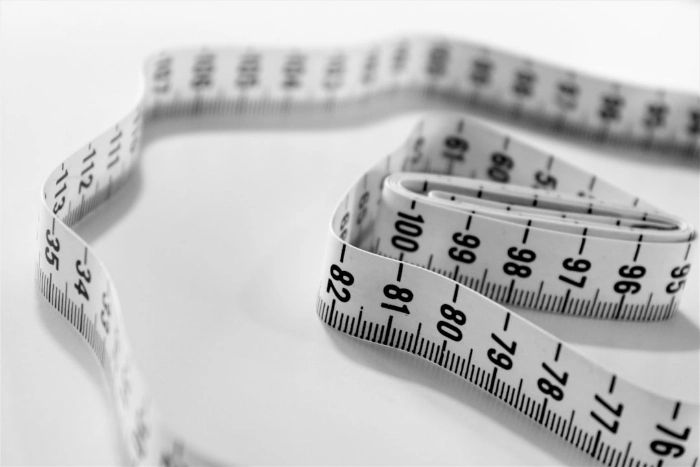Losing Weight After Menopause

When I entered menopause I quickly gained 30 pounds. I tried everything to lose the weight. I worked out twice a day everyday and cut out all sweets and snacks. I still kept gaining weight. I felt out of control, and none of my clothes fit.
That's when I discovered intermittent fasting. I started fasting every night at 8:00 p.m. No food or drinks besides water from 8pm until bedtime. In the morning I had plain black coffee with no cream or sugar, then I fasted all day until 4:00 p.m. I made sure to drink plenty of mineral water (no flavors) during the day. At 4:00 p.m. I had a snack, and around 6:00 p.m. I ate dinner. I didn't deprive myself and ate whatever I wanted during that 4-hour window. I made sure to stop eating by 8:00 p.m. I repeated this daily– 20 hours of fasting with 4 hours of eating. After a few days my mood improved and my hot flashes disappeared, so I kept fasting every day. After a few weeks, I noticed that my clothes fit better and the puffiness that I was experiencing everywhere– my face, hands, feet, ankles, all of my joints– was gone. I realized that this fasting thing was starting to work.
What started as an experiment has become a way of life. Yes, it was a big change, but after two years of intermittent fasting, I am completely used to it. Most weekends I eat breakfast, lunch, dinner, and a snack (or even an adult beverage on a special occasion) but most weekdays it's easier for me to fast until after work.
Why Does Weight Gain Happen after Menopause?
First, let’s break down why the scale seems stuck (or moving in the wrong direction) after menopause:
Estrogen levels drop, and that affects how your body stores fat (hello, belly fat).
Metabolism slows down, which means you burn fewer calories at rest.
Insulin sensitivity decreases, leading to higher blood sugar and more fat storage.
And let’s be honest—energy levels and motivation can dip, making workouts less appealing.
This is where fasting can step in and help recalibrate things.
What Is Fasting, Exactly?
Fasting simply means cycling between periods of eating and not eating. The most popular form is intermittent fasting (IF)—for example, the 20:4 method (fasting for 20 hours, eating within a 4-hour window). There are several popular forms of intermittent fasting:
16:8 (fasting for 16 hours, eating for 8)
14:10 (fasting for 14 hours, eating for 10)
12:12 (fasting for 12 hours, eating for 12)
20:4 (fasting for 20 hours, eating for 4) This is the method that worked for me!
Fasting has been around for centuries, and science is now catching up with why it works, especially for women in midlife and beyond.
How Fasting Helps With Post-Menopausal Weight Loss
Improves Insulin Sensitivity
After menopause, your body tends to become more insulin-resistant. Fasting gives your body a break from constant glucose processing, helping lower insulin levels and making it easier to burn fat.
Boosts Fat Burning
When you fast, your body uses stored fat for energy instead of the glucose from food. Over time, this can lead to noticeable fat loss—especially around the belly area.
Reduces Inflammation
Chronic inflammation is linked to weight gain and a host of other age-related issues. Fasting has been shown to lower inflammation markers in the body, supporting overall health.
Enhances Hormone Regulation
Fasting can help rebalance hunger hormones like ghrelin and leptin, making you more in tune with real hunger—not emotional or habitual eating.
Promotes Cellular Repair (Autophagy)
This is your body’s natural "clean-up" system. Fasting triggers autophagy, which helps clear out damaged cells and may support healthier aging and metabolism.
But... Is Fasting Safe After Menopause?
In most cases, yes—but it’s important to listen to your body and start slow. Many women find success with gentler approaches like:
12:12 fasting to start (12 hours of eating, 12 hours fasting)
Gradually increasing to 14:10 or 16:8
Finally trying 20:4 (this was the sweet spot for me)
Pairing fasting with whole, nutrient-dense meals
Also: stay hydrated, manage stress, and get plenty of protein and fiber. Fasting works best when paired with a lifestyle that supports hormone balance and metabolic health.
This is More than Just Weight Loss
Weight loss is often a happy side effect of fasting, but the real magic is in how you feel:
More energy
Better sleep
Fewer cravings
A renewed sense of control over your body
And honestly? That’s a big win after years of your body doing its own thing.
Dear Reader, fasting isn’t about restriction—it’s about creating space for your body to reset and heal. After menopause, when things feel a little off-balance, fasting can be a simple but powerful tool to help you feel strong, lean, and vibrant again.
As always, do your own research before making major changes to your eating patterns—especially if you have underlying health conditions.
But if you’re curious about fasting? Give it a gentle try. Think of it as an experiment. See what happens for you. Your post-menopausal body just might thank you.
To Your Health After Fifty,
Jennifer Kaye
